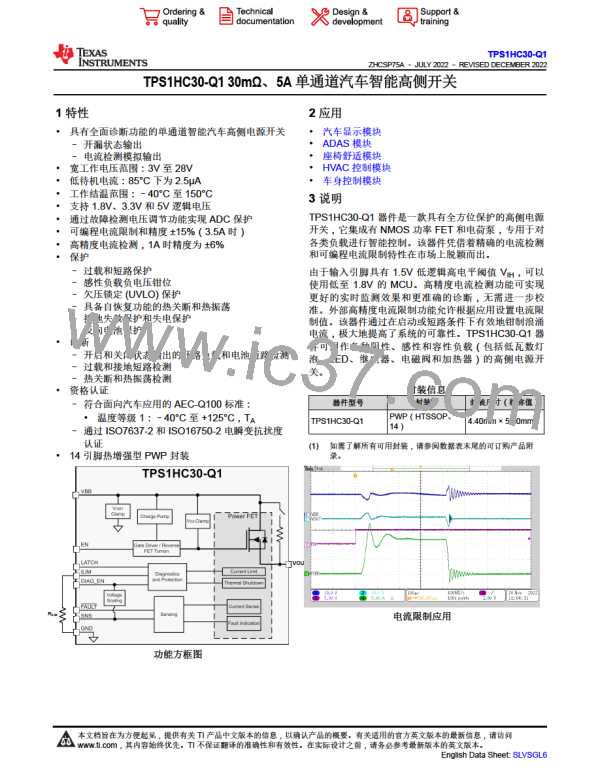TPS1HC30-Q1
ZHCSP75A –JULY 2022 –REVISED DECEMBER 2022
www.ti.com.cn
VBAT
VBB
DIAG_EN
OPEN LOAD
SNS
FLT
Vol,off
FAULT
Rpu
OUT
EN
GND
图8-16. Open-Load Detection Circuit
8.3.4.3 Short-to-Battery Detection
Short-to-battery detection has the same detection mechanism and behavior as open-load detection, both in the
on-state and off-state. There is no way to differentiate between open load and short-to-battery in this device, but
the system detects the fault and protects accordingly. See 表8-2 for more details.
8.3.4.4 Reverse-Polarity and Battery Protection
Reverse-polarity, commonly referred to as reverse battery, occurs when the ground of the device goes to the
battery potential, VGND = VBAT, and the supply pin goes to ground, VBB = 0 V. In this case, if the EN pin has a
path to the "ground" plane, then the FET turns on to lower the power dissipation through the main channel and
prevent current flow through the body diode. Note that the resistor, diode ground network (if there is not a central
blocking diode on the supply) must be present for the device to protect itself during a reverse battery event.
Smart High Side Switch
VBB
MCU
RPROT
EN
GPIO
Gate Driver
VOUT
GND
RLOAD
RGND
图8-17. Reverse Battery Circuit
For more external protection circuitry information, see Reverse Current Protection. See the fault truth table for
more details.
8.3.4.5 Latch-Off Mode
The TPS1HC30-Q1 comes with a latch functionality that decides after the channel is shut down due to a fault,
whether or not to automatically try and turn back on, or stay off until other action is taken. This functionality is
done by holding the LATCH pin high for latch-off functionality or holding LATCH low for auto-retry functionality.
Copyright © 2023 Texas Instruments Incorporated
Submit Document Feedback
29
Product Folder Links: TPS1HC30-Q1

 TI [ TEXAS INSTRUMENTS ]
TI [ TEXAS INSTRUMENTS ]